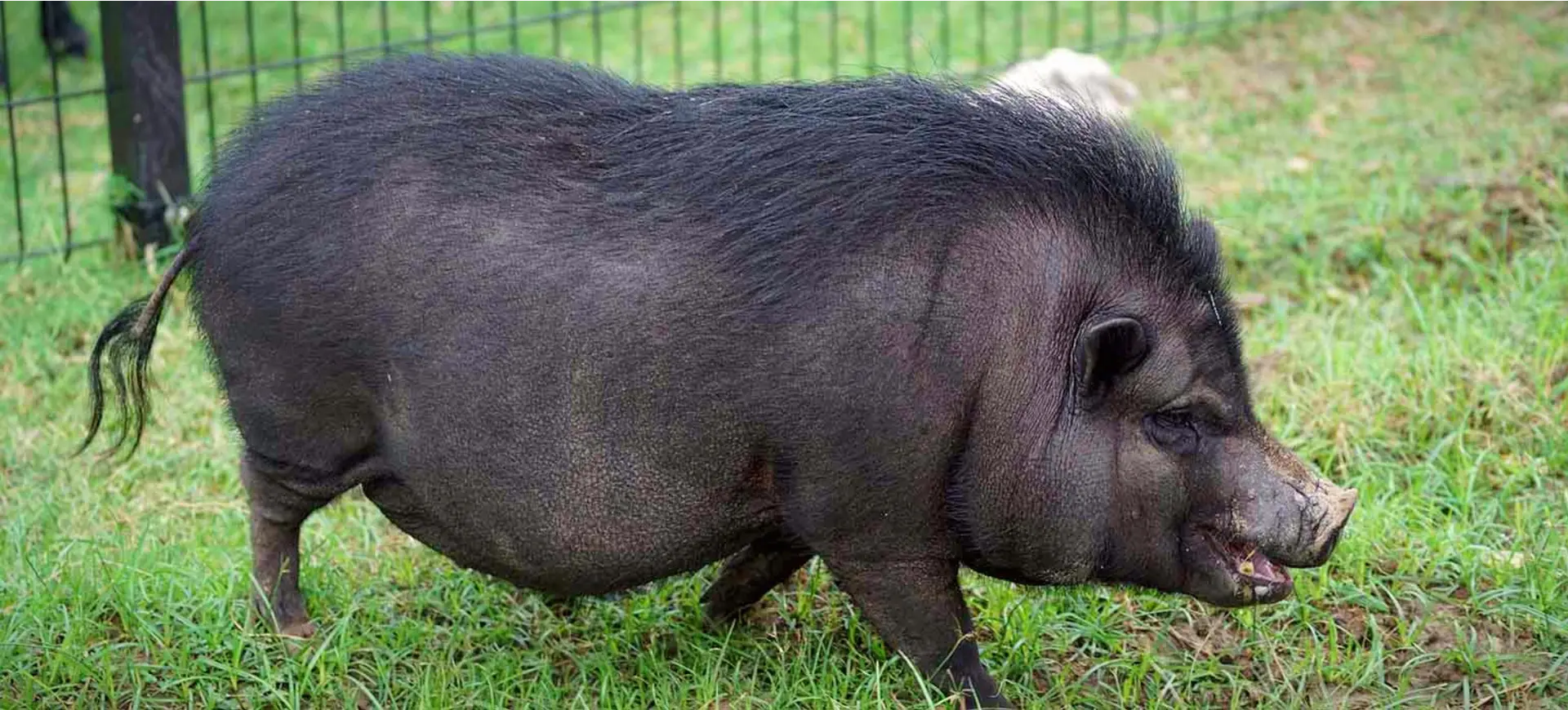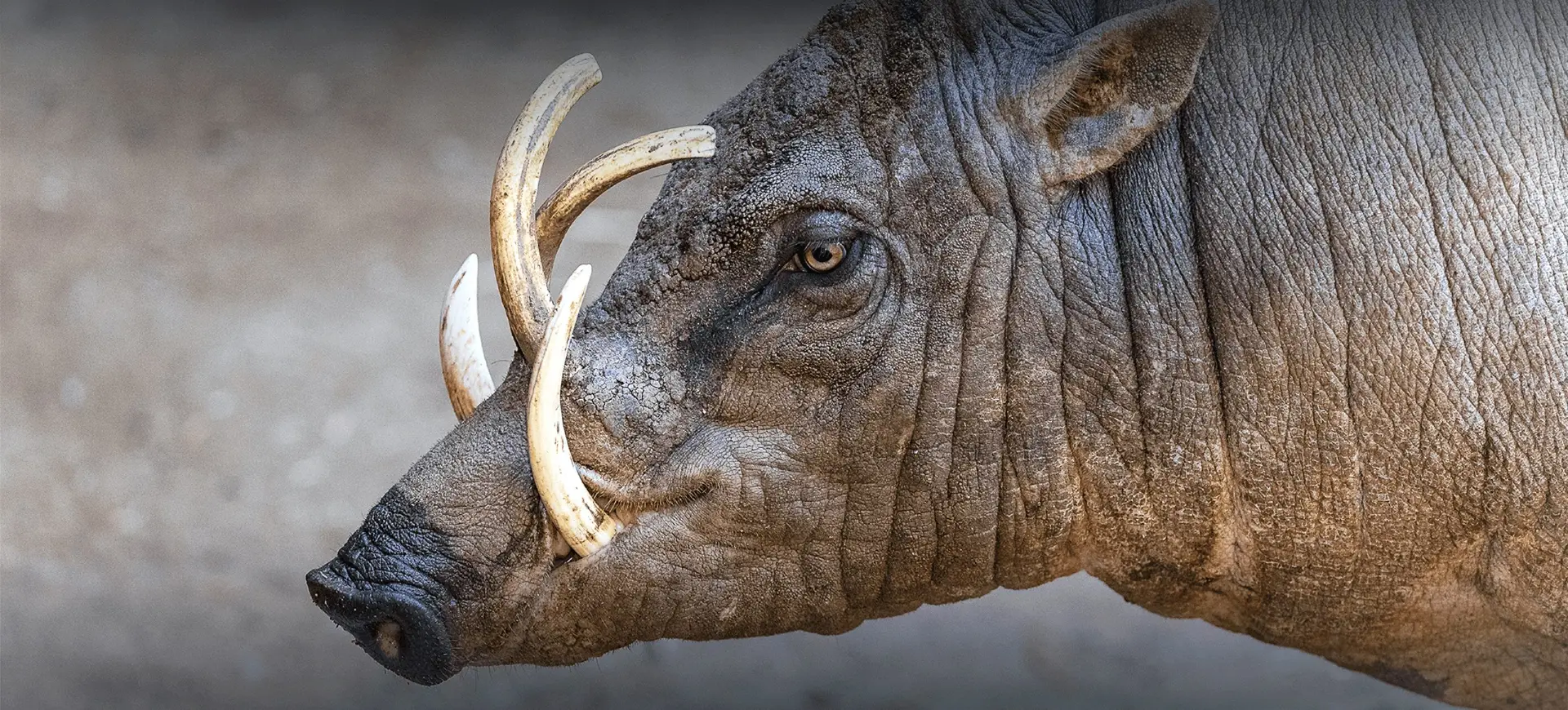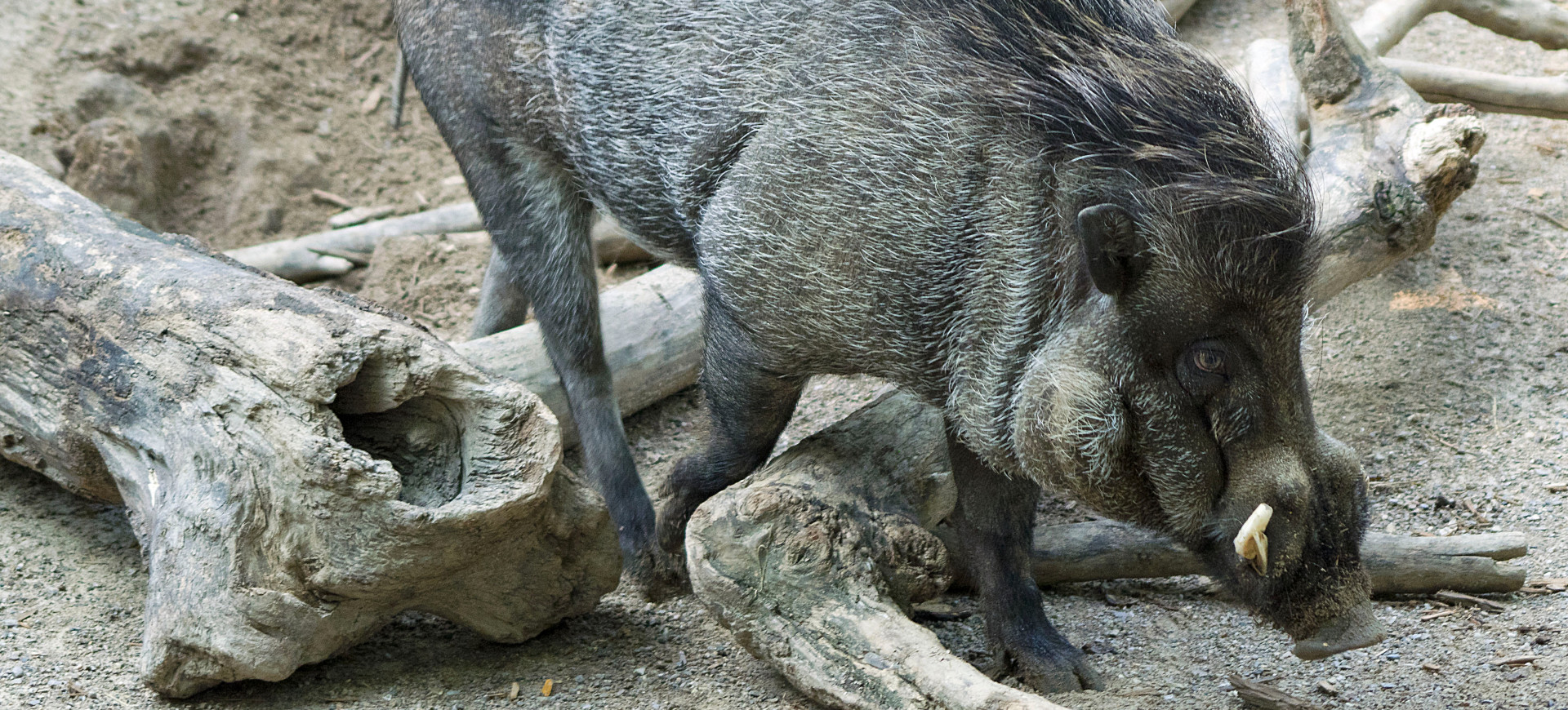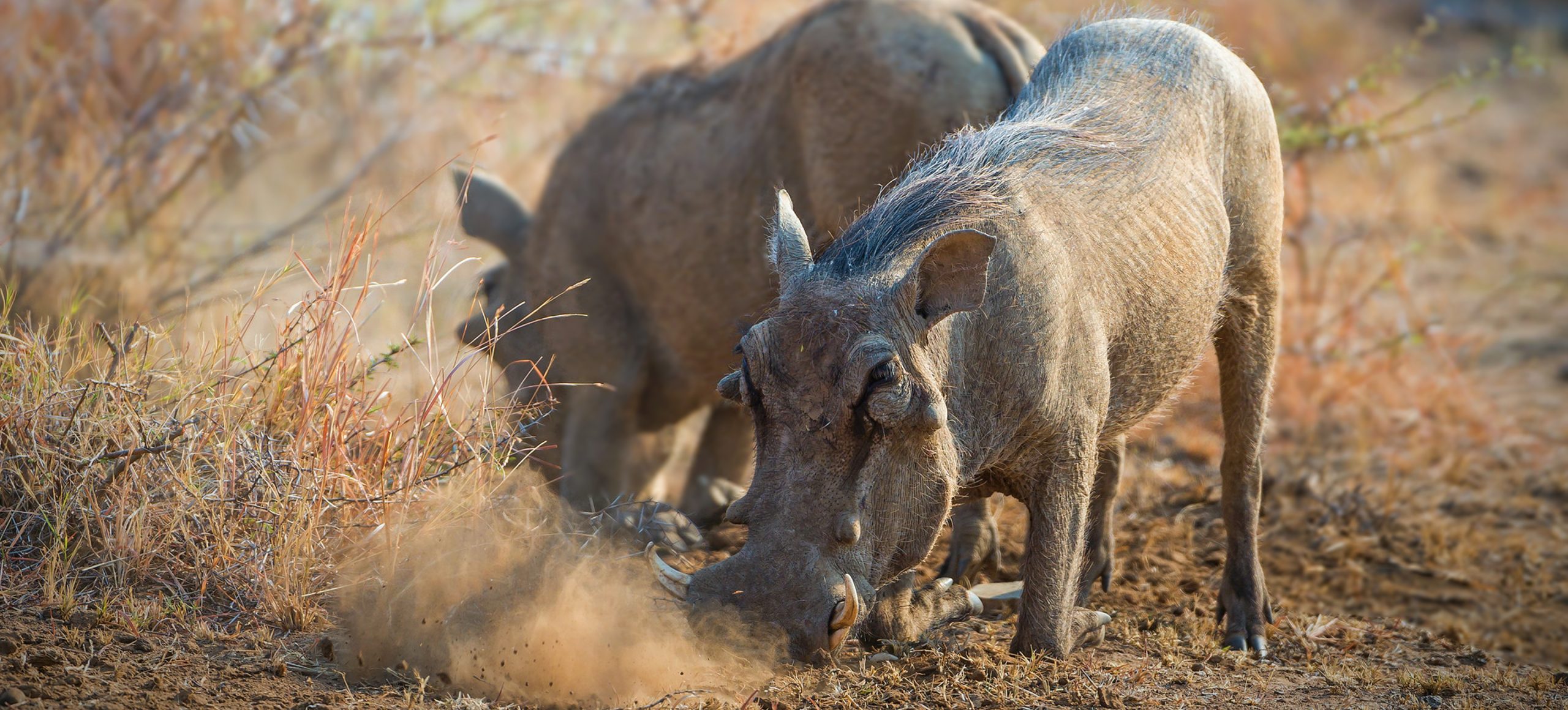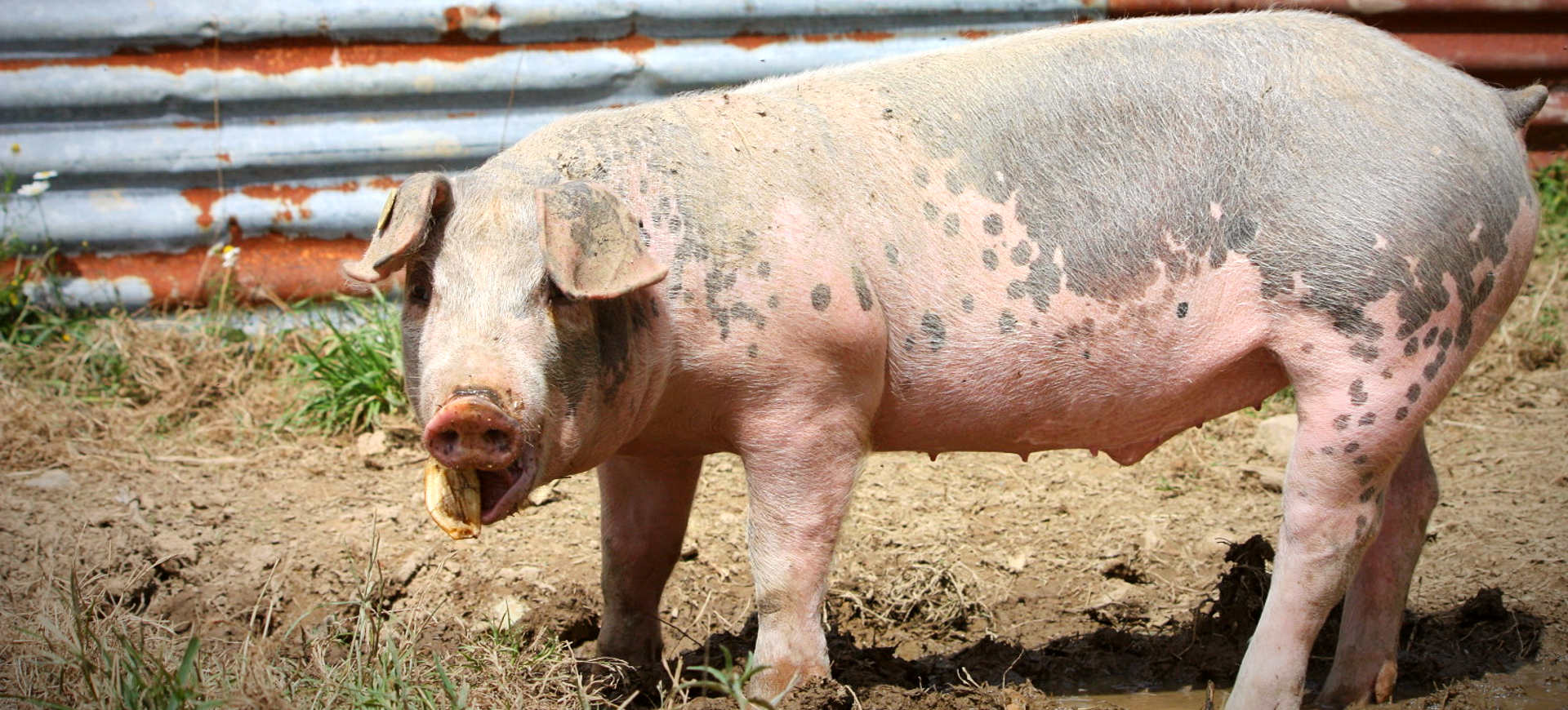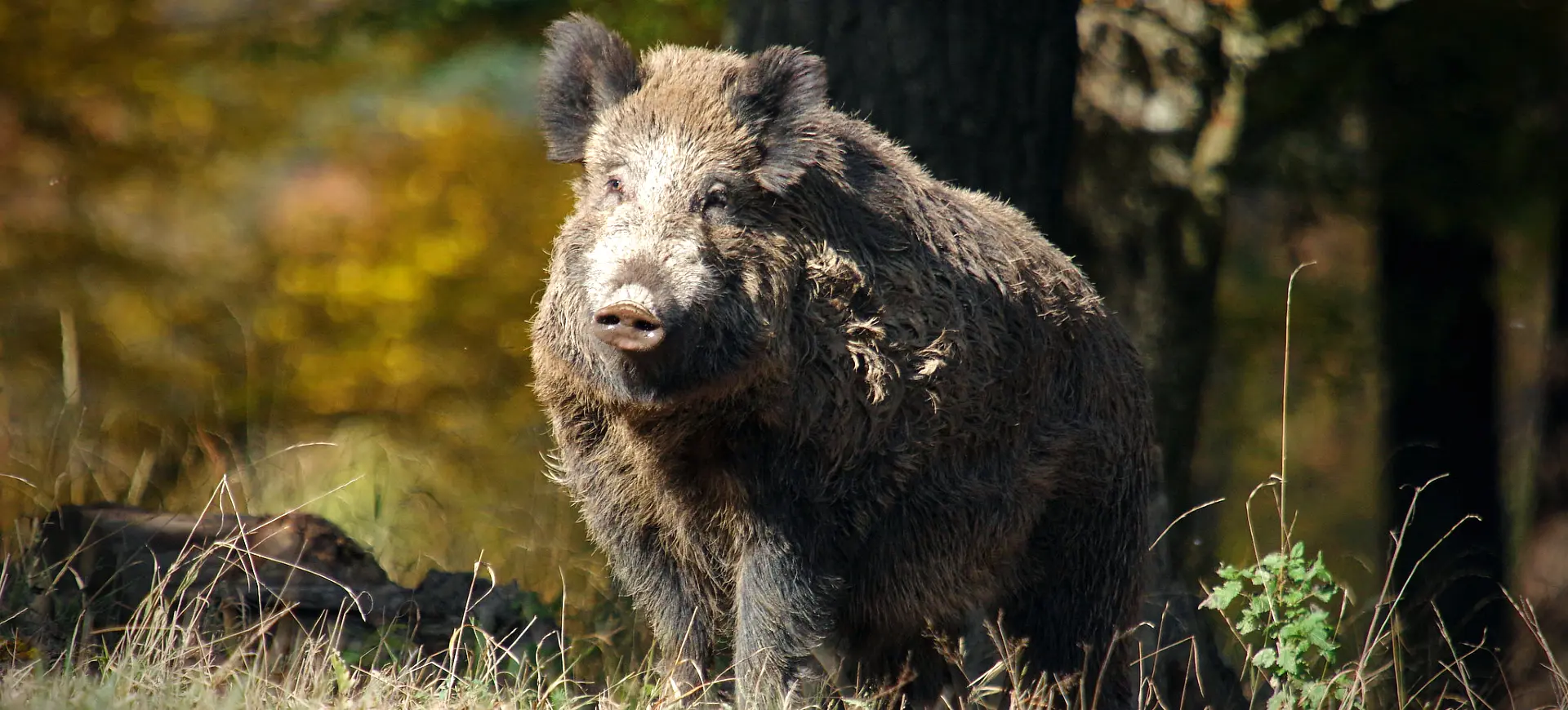Overview
The Red River Hog, also known as the Bush Pig, is a unique, colorful pig species native to sub-Saharan Africa’s forests, savannas, and brushy areas. This robust and powerful animal is renowned for its rich, reddish-brown coat, marked with black and white stripes on the legs and elongated, white-tufted ears, giving it a distinct appearance.
The Red River Hog is the most vibrant and social of all wild pigs. Known for their strong social bonds, these animals live in sounders, which are groups of 6-20 individuals, usually led by a dominant male. The group, consisting primarily of females and their offspring, relies on the strength of their numbers for protection from predators.
Despite their bulk, Red River Hogs are agile and good swimmers, often found near water bodies. They are omnivores, consuming a wide range of food from roots and tubers to small mammals, insects, and carrion. Although they are primarily nocturnal, they can be active during the day when undisturbed by human activity.
Taxonomy
Kingdom
Phylum
Class
Order
Family
Genus
Species
Type
Physical Description:
The Red River Hog boasts a unique physical appearance that differentiates it from other wild pigs. It has a reddish-brown coat with darker patches, particularly around the eyes, which creates a contrasting mask-like appearance. Its distinctive, elongated ears have long white tufts at the tips and are large and pointed.
Both males and females possess sharp tusks, with males having the longer pair. The males, also larger than females, carry a significant amount of fat, which helps to protect them during fights. The legs are relatively short but robust, displaying black and white stripes that offer a startling contrast to the overall reddish coat. The body of the Red River Hog is compact and muscular, culminating in a bushy, white-tufted tail.

Lifespan: Wild: ~15 years || Captivity: ~20 years

Weight: Male: 120-265 lbs (54-120 kg) || Female: 88-154 lbs (40-70 kg)

Length: Male: 4.9-5.9 feet (1.5-1.8 m) || Female: 3.9-4.9 feet (1.2-1.5 m)

Height: Male: 30-36 inches (76-91 cm) || Female: 24-30 inches (61-76 cm)

Top Speed: 30 mph (48 km/h)
Characteristic:
Native Habitat:
Red River Hogs inhabit a variety of habitats across sub-Saharan Africa. They are predominantly found in the rainforests but can also adapt to dry forests, montane forests, savannas, and brushy areas. They prefer habitats near water bodies and are excellent swimmers.
These animals require dense vegetation cover for hiding and resting during the day. Their range extends from Senegal and Gambia in the west, across the Central African Republic and the Democratic Republic of Congo, to western Ethiopia, and southwards to northern South Africa.
Climate Zones:
Biomes:
Biogeographical Realms:
Continents:
Countries:
Diet:
Diet & Feeding Habits:
Red River Hogs are omnivorous with a diet that includes roots, tubers, fruits, grasses, eggs, small mammals, reptiles, insects, and carrion. They have a particular preference for bulbs, tubers, and root crops. They use their strong snouts and tusks to dig up buried food which can cause significant damage to crops.
The Red River Hogs are nocturnal feeders, usually setting off at sunset to forage throughout the night. These animals can travel considerable distances during food scarcity to find food and water. They often feed in groups, using the strength of their numbers to ward off potential predators.
Mating Behavior:
Mating Description:
Red River Hogs have a polygynous mating system where a dominant male, or boar, mates with several females in a group. The mating season, or rut, usually occurs in the dry season. During this time, the males become more aggressive and compete for the right to mate with the females, often clashing violently with their sharp tusks.
The gestation period lasts about 120 days, after which the female, or sow, gives birth to a litter of 3-6 piglets. The piglets are born in a nest constructed by the sow from vegetation. The young are weaned at around 4 months but remain with the mother until they reach sexual maturity, around 18 months for females and 24 months for males.
Reproduction Season:
Birth Type:
Pregnancy Duration:
Female Name:
Male Name:
Baby Name:
Social Structure Description:
Red River Hogs are social animals living in sounders composed of one dominant male, several females, and their offspring. These groups are matriarchal, with the oldest female often leading the group. The sounders are territorial, with males defending their territories against intruders.
Group living offers several advantages, including increased vigilance against predators and better resource access. However, these pigs can also function as solitary individuals when resources become scarce.
Groups:
Conservation Status:
Population Trend:
While the exact wild population of Red River Hogs is unknown, they are considered widespread across their range. Their population trend is generally stable, although local populations may fluctuate due to hunting pressures and habitat loss.
In some regions, they are common and can even be considered pests due to their habit of raiding crops. However, they are less common in other parts due to overhunting for meat and the bushmeat trade. While not currently threatened at a species level, local populations could face challenges if hunting pressure and habitat destruction increase.
Population Threats:
The main threats to the Red River Hog include hunting and habitat destruction. Due to their large size and social nature, they are an easy target for hunters and are widely hunted for their meat throughout their range. They are also caught in the bushmeat trade in certain regions.
Another significant threat is habitat destruction due to logging, agriculture, and human settlement expansion. Red River Hogs often venture into farmlands as their natural habitat diminishes, leading to human-wildlife conflicts. They are sometimes killed for damaging crops or in retaliation for perceived threats to livestock.
Conservation Efforts:
The Red River Hog is protected under various national and international laws. Its widespread distribution and adaptability to different habitats have contributed to its relatively stable population trend.
However, given the threats it faces, conservation measures are necessary. These include maintaining and protecting their habitats, enforcing hunting regulations, and implementing sustainable farming practices to minimize human-wildlife conflicts. Public awareness campaigns also play a critical role in promoting coexistence and reducing hunting pressure.
Additional Resources:
Fun Facts
- Despite being a pig, the Red River Hog is an excellent swimmer and can often be found near water bodies.
- The males have a distinct ridge of hair, or mane that stands up when the animal is excited or agitated.
- Red River Hog piglets have distinctive yellow and brown stripes, making them look more like little watermelons than pigs. These stripes disappear as they mature.
- The male Red River Hog will sometimes fight other males by running at each other, tusks first, in an attempt to slash their opponent.
- Red River Hogs have a keen sense of smell that they use to locate food underground. Their long snouts are powerful tools for digging up roots and tubers.
- These pigs communicate with various sounds, from grunts and squeals to growls and chirps.
- The Red River Hog has been reported to eat small animals but mainly enjoys a vegetarian diet.
- Although they usually only breed once a year, females may have two litters per year if conditions are favorable.
- Red River Hogs are one of the most colorful pig species, with a rich reddish-brown coat and striking black and white markings.
- These pigs are very agile and can run fast if they feel threatened, often in a zigzag pattern to evade predators.






